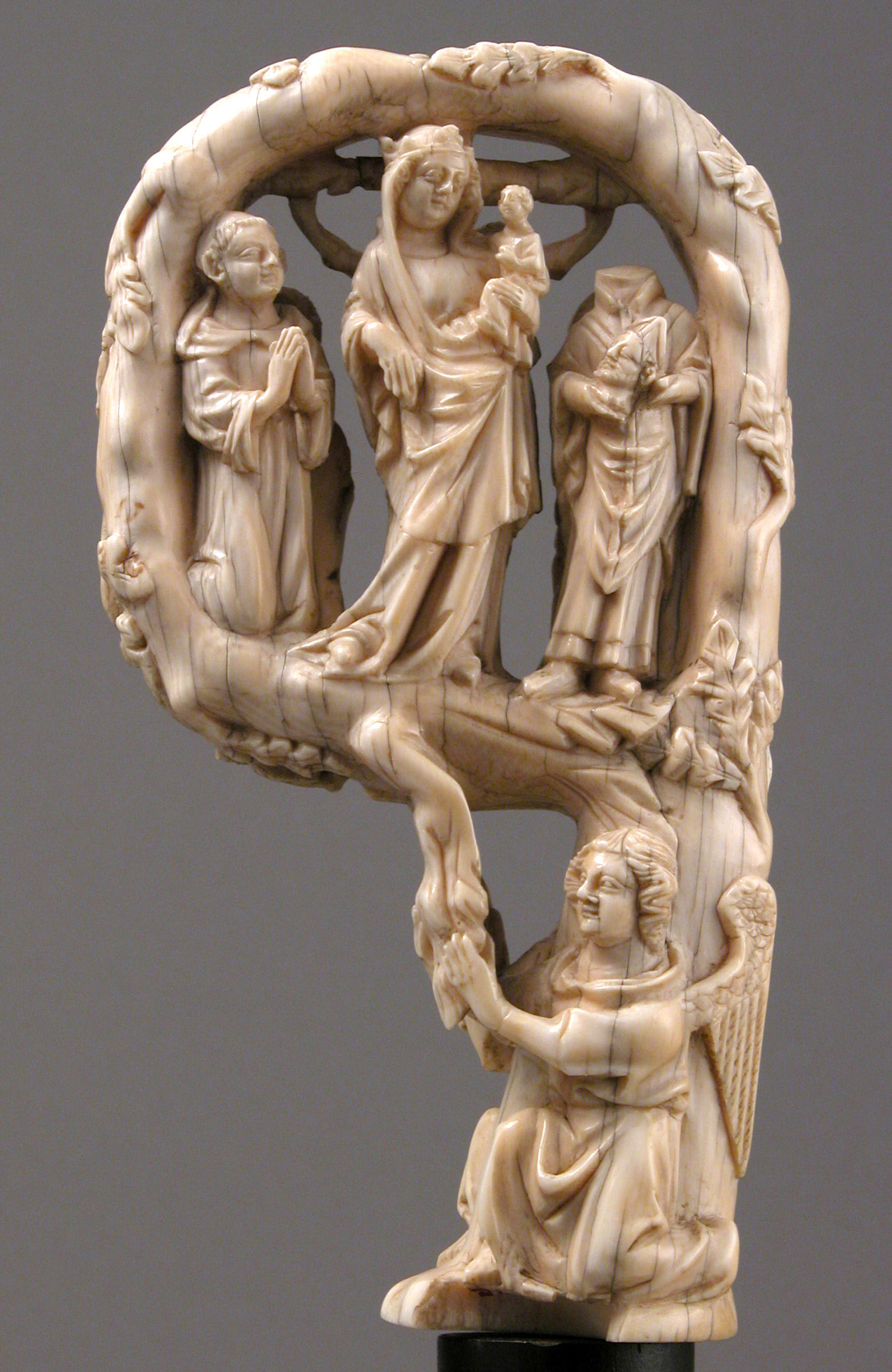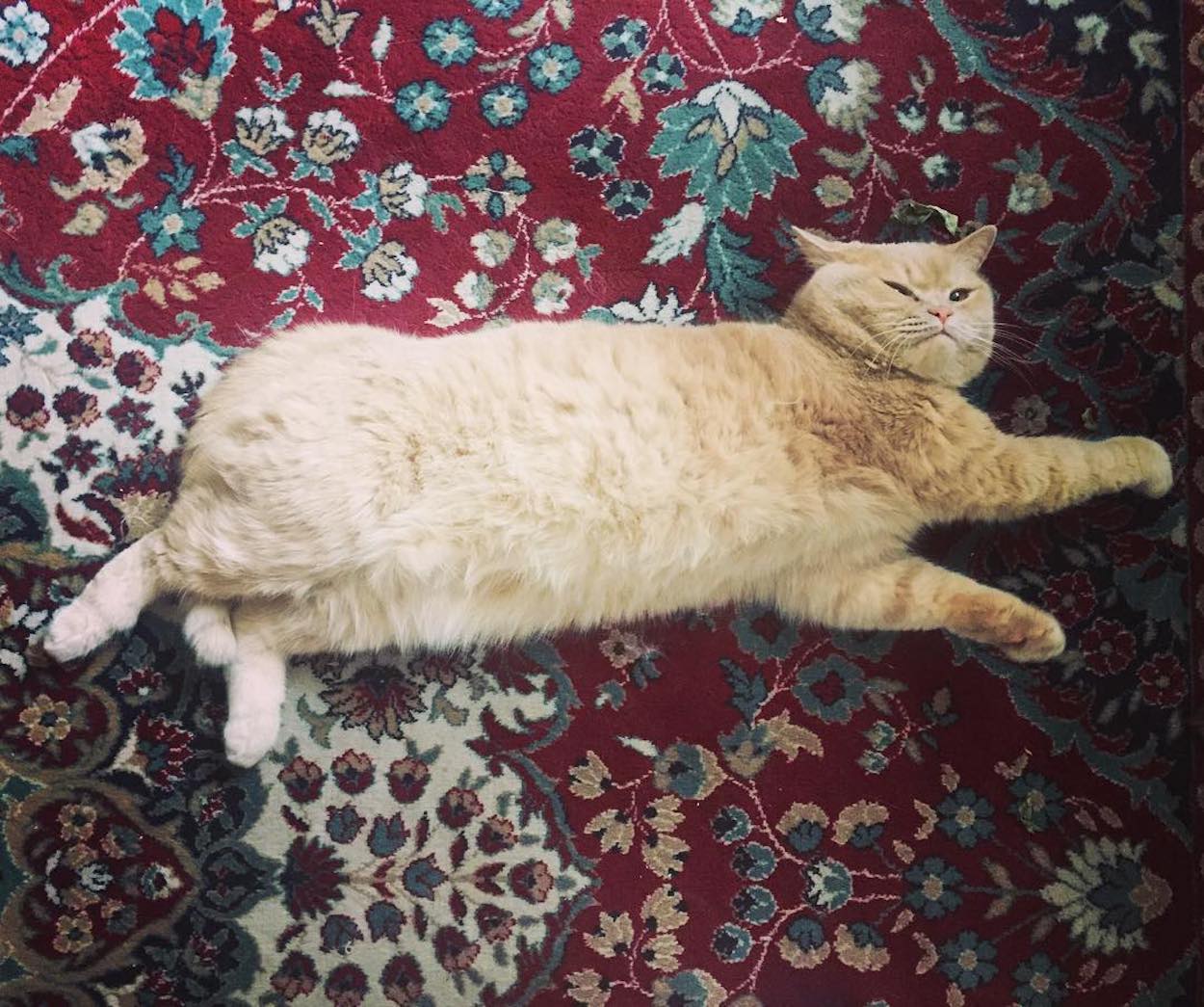Bishops, abbots, and abbesses in medieval Europe consistently wore and carried signs of their exalted religious status, and one of the most important of these symbols was the staff known as a crozier. Croziers, often the length of the body or longer, were distinguished by a hooked, and sometimes elaborate, cap at the top. This French piece demonstrates how small items on regular display like these were remarkable pieces of art in their own right.
This crozier is double-sided, featuring a depiction of the crucifixion of Christ on the opposite side. This scene, featuring the Virgin Mary holding the infant Christ, reveals some personal details of the probable owner of this piece. To the left of the Virgin Mary is an abbot kneeling in prayer; to the right is a headless figure dressed in a bishop’s robe, cradling his mitred head in his hands. Taking these figures together, scholars believe that this crozier was made for a fourteenth-century abbot of the monastic community of St. Denis, north of Paris. St. Denis, a martyr and patron saint of the French monarchy, famously carried his head from the site of his execution, preaching a sermon all the way, before collapsing at the site of what would become the future shrine and monastery. Although scholars are not certain which abbot carried this crozier, it is clear that he was not only a man of means, but also a patron of the arts.
Croziers were highly personalized and were often designed to reflect the tastes and beliefs of their owners. The imagery of this piece indicates that the abbot in question took his role as leader and guide in his monastery quite seriously, leaving us a remarkable reminder of him, his life, and his office.
- Stephanie Skenyon


 Unknown Artist
Unknown Artist